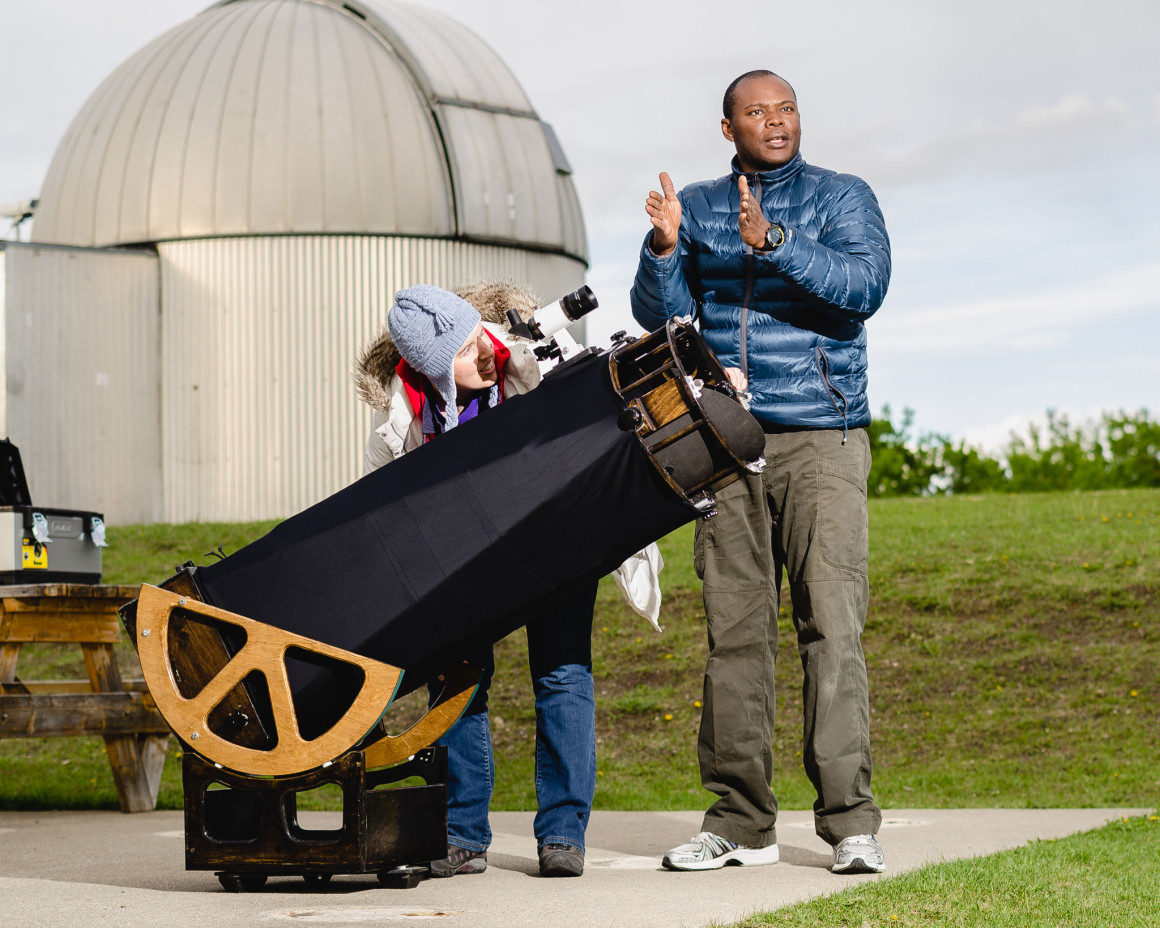
Rothney Observatory hosts night under the stars
By Jason Herring, July 14 2016 —
If you’re not an astrophysics student, there’s a good chance you don’t know that the University of Calgary runs an observatory. The Rothney Astrophysical Observatory is located about 15 kilometres outside of the city on Highway 22 and boasts one of Canada’s three largest telescopes.
The observatory will open its doors to visitors this summer for the Milky Way Nights event from 10:00 p.m. – 2:00 a.m. on July 21–23, and again from August 25–27. According to observatory’s director Dr. Phillip Langill, evenings let the public explore space with guidance from trained scientists.
“It’s an opportunity to think about the universe, ponder the planet, look through some high tech telescopes, talk about science and astronomy and just have fun,” Langill says. “We also point out the constellations — we talk about the lore and the myths about the characters in the sky as well. We do all that fun stuff.”
Milky Way Nights originated as a week-long event called Milky Way Week. The observatory launched the event to see what the interest in a late-night drop-in time would be. Langill says the turnout was surprising.
“I was blown away by how many night owls showed up to look through a telescope. We were trying to shoo people out of there at 2:30 a.m.,” he says. “Doing it every night for a week, that basically killed us. We were totally banged up by the end of the week. So instead of doing Milky Way Week, we do Milky Way Nights.”
The RAO is near the hamlet of Priddis, an hour’s drive from the U of C. The remote location helps minimize light pollution from Calgary. Another precaution the RAO usually takes to prevent excessive light is holding their late-night events while there’s no moon in the sky. While the moon’s cycle prevents this year’s weekend event from being completely free of moonlight, Langill says the moon is interesting to see through a high-power telescope.
Some planets will also be visible during these nights. Jupiter is expected to be in the sky until midnight, while Mars and Saturn will be visible the whole night. Also visible are what Langill calls “deep sky objects.”
“What we really like to do, because we’re up late and because the sky is a little darker, is hone in on the fainter objects in the sky,” Langill says. “We see the more faint clusters, the more faint galaxies, that kind of thing. These things we call deep sky objects, because they’re the kind of things you need a really dark sky to be able to see.”
Since a clear night is vital for skygazing, Calgary’s recent stormy weather is a bit worrying, but Langill assures that the early month’s cloudy days are a good sign for late-July observations.
“Actually, this is really great, because this rainy weather will be long gone by the time we get to the end of July,” he says. “It’s a four-hour thing, and we do it for three nights in a row, so the hope is that it’s clear enough at some point that evening and bright enough to show people what’s in the sky.”
Entry to Milky Way Nights is by donation on a drop-in basis.
For more information, visit rao.ucalgary.ca
